12 Weigela Varieties for a Gorgeous & Fragrant Bed
Author: Jen Worst | Editor: Omar Alonso
Review & Research: Jen Worst & Chris Miller
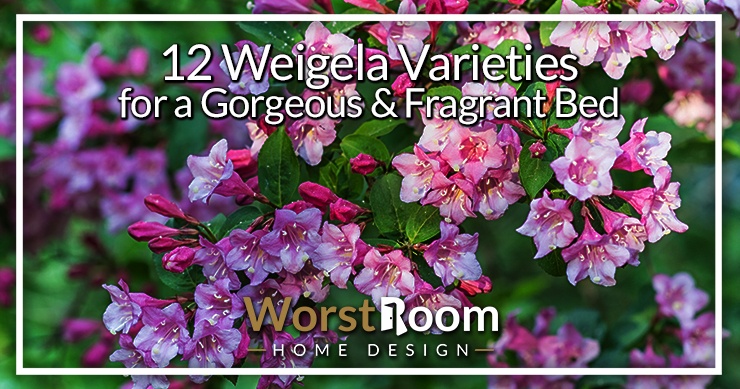
Are you thinking about sprucing up your garden? Why not add a few weigela varieties to your flowerbeds or pots this season? Weigelas are low maintenance and produce beautiful flowers; you can position them anywhere in the garden with indirect sunlight.
Weigelas are flowering shrubs with several varieties. They come in different shapes and sizes, most staying under 5 feet tall. So, they’re a great choice for indoor and outdoor gardens, offering you a hardy plant that’s attractive and easy to care for.
Most types of weigela bloom all summer. A few keep flowering throughout the winter, making them versatile and attractive plants for the year across a range of USDA zones from 4 through 8 with some success in 9. Most varieties mature in three years, giving you many years of viewing pleasure.
12 Weigela Varieties
While you can always find more rare varieties that you'll never get a chance to get your hands on, here are the twelve we deem most special that are still attainable by us common folk.
Have fun diving into the Caprifoliaceae family and deeper into this honeysuckle genus, including all of these shrubs that are natives of eastern Asia. Fun facts: The 12 accepted weigela species are named after Christian Ehrenfried Weigel, a German scientist.
Sonic Bloom Pearl
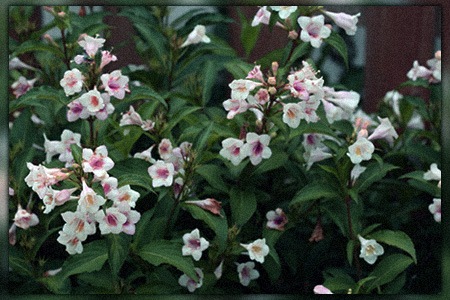
Also known as the “Sonic Bloom Pink,’ this weigela features a bright pink color with large, funnel-shaped flowers. Hummingbirds and bees love the Sonic Bloom Pearl. Imagine these growing in the same bed as any types of lilacs, which hummingbirds also adore.
The blooms start light pink and deepen to a magenta hue as the season progresses. It’s a heavy bloomer and grows to five feet in height.
Monet Sunset Weigela
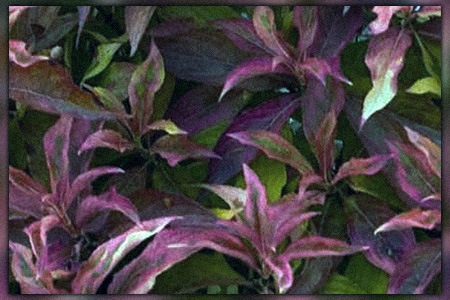
Also known as the “My Money Sunset,” this weigela shrub produces eye-catching foliage. Like the Sonic Bloom Pearl, it yields bright pink flowers with oval-shaped foliage featuring a green center and white on the edges. The foliage ranges in color depending on the environment.
The foliage can vary from a light to a deep forest green; some come with orange or yellow mixed into the green, giving it the “sunset” moniker. It’s a dwarf variety, growing to 1.5 feet tall, and ideal for ground cover or as a pot plant.
Golden Jackpot
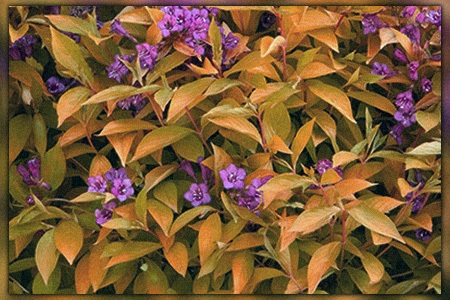
This variety is also sought-after by gardeners for its amazing foliage. The leaves are lime green, shimmering in a golden hue in the sunlight. The foliage keeps its color in the winter, with no fading or darkening as the weather gets cooler.
Its deep purple flowers contrast the leaves, with the trumpet-shaped blooms fearing a dark red center. You’ll need to plant this variety in direct sunlight, or the foliage will remain pale. You don’t get the full visual effect from the flowers and foliage.
Magical Fantasy Weigela
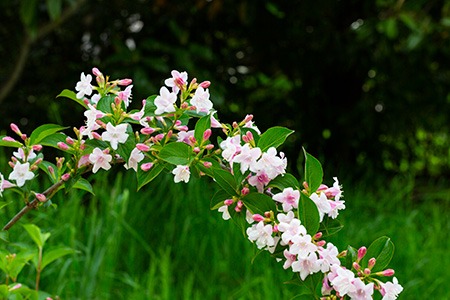
These weigela varieties produce green and white foliage, with the leaves curling in and staying small, even when the plant matures. The growth angles upward instead of spreading and reaches a height of 4 feet.
The flowers produced by the Magical Fantasy are light pink and trumpet-shaped. It’s a heat-resistant plant and suits planting in gardens in USDA Zone 4.
Crimson Kisses
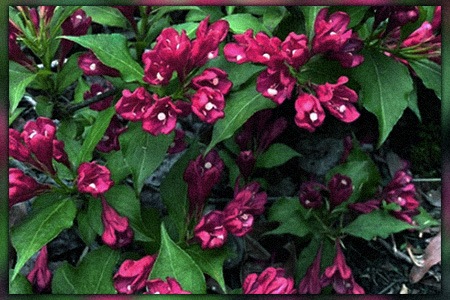
These types of weigela produces crimson blooms in a trumpet shape but smaller than other varieties. The flowers keep blooming throughout the summer months, provided you deadhead the plant every so often to inspire new growth.
The blooming starts at the end of the spring, with the second run of flowers arriving in the late summer. The second batch of flowers isn’t quite as visually dramatic as the first, but pretty, nonetheless. This plant reaches a height of 3 feet.
Wine & Rose Weigela
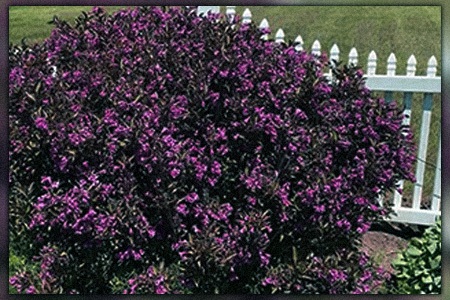
The flowers this variety produces look like they’re dipped in red wine, hence its name. The blooms take on a deep fuschia coloring, covering the entire bush in full bloom. Also known as the “Florida Alex,” this weigela grows throughout the state and is remarkably heat tolerant.
This weigela likes to spread, becoming very bushy. Gardeners can prune it into a round shape. The flowers keep blooming through to the summer, keeping their color until mid-fall.
Weigela Rosea
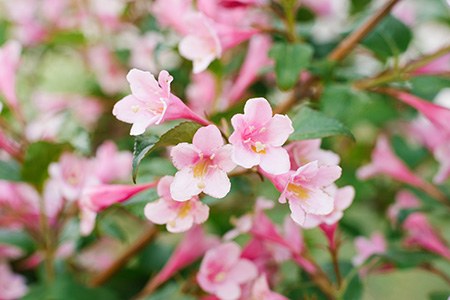
This variety is the most common in the weigela genus. It produces intense pink blooms with a rose-colored finish. The flowers start off light pink, deepening in color as the season progresses.
The flowers are smaller than other varieties, but the plant produces many of them for a blanketing effect across the shrub. The foliage is dark green in color, with the plant reaching 4 to 5 feet in height.
Czech Sunny Side Up
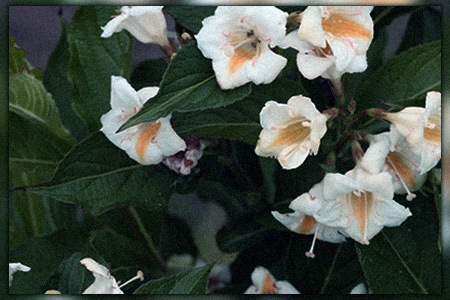
Originally bred in the Czech Republic, these weigela varieties features white flowers with dark green foliage. Towards the end of the summer, the Czech Sunny Side up experiences a change in its flowers, with the white paling and the center turning a light yellow. It’s a mid-sized variety, growing to 3 to 4 feet tall.
Eva Rathke Weigela
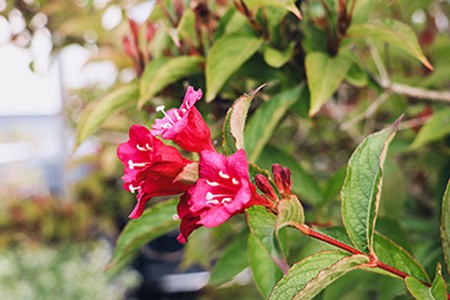
If you spot a weigela with hot pink flowers, it’s probably the Eva Rathke. This bush produces fuschia blooms that maintain their color throughout summer. The plant bursts into flower at the beginning of the summer, maintaining flower production throughout the season.
The Eva Rathke experiences a second blooming phase towards July/August. Still, the flowers aren’t as productive or dramatic as the first bloom. It’s a larger variety, growing 4 to 5 feet tall.
Florida Wings of Fire
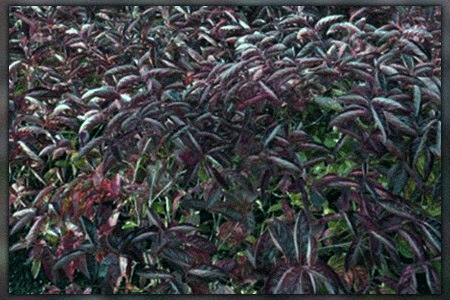
This weigela variety experiences dramatic changes in the color of its foliage throughout the seasons. The leaves start off green during the spring and summer, progressing into yellow in the fall and deepening to an orange/red color by the beginning of winter. The blooms are also very pretty, producing bright pink flowers.
Florida Purpurea
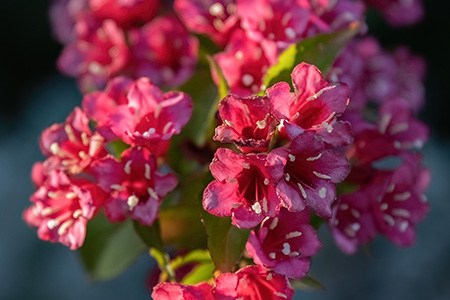
This weigela variety gets its name from its violet-colored leaves. The foliage is reddish-purple, producing rose flowers that start off light pink and lighten as the season progresses toward the fall. I can envision these growing beneath taller types of wisteria, creating a majestic purple scene.
The long, funnel-shaped flowers eventually finish in a light pink hue in the fall, featuring white tips for a dramatic visual effect that contrasts the foliage. It’s a mid-sized variety, growing to around 3 feet in height. It’s another great choice for a pot plant or as ground cover.
Red Prince Weigela
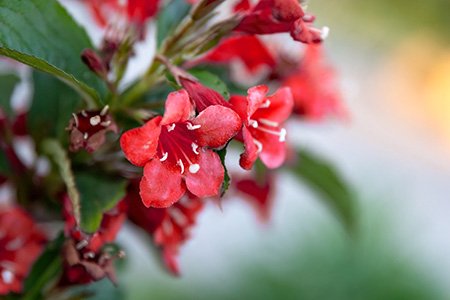
These types of weigela produce red flowers, but with more of a scarlet hue than the Crimson Kisses variety discussed earlier.
The blooms produce a balance between pink and red, and it’s a highly reliable bloomer, even in drier, warmer conditions. The flowers appear consistently and maintain their dramatic coloring throughout the summer.
Tips for Caring for Your Weigela
Fantasizing about and eventually getting your own weigela garden going is one thing, but taking care of them so they can bring you lasting enjoyment is another. Let's cover how you can keep your flower bed looking fresh for the long-term.
Placement & Planting
Most weigela varieties prefer growing in indirect sunlight, with a few standing in direct sun. However, that’s not typical of the genus. Place them next to trees and other bushes, but not under them. Typically, they enjoy the morning sun and afternoon shade in the garden.
If you’re planting in southern states, make sure you keep the weigela out of direct sunlight, or you might experience the leaves curling due to the heat. The mid-sized and dwarf varieties are ideal for planting in pots. Still, they’ll need plenty of room to accommodate the exponential root growth.
Soil
Weigelas prefer growing in loamy, airy, well-draining soil. Don’t plant in heavy soils as the roots tend to attract root rot quickly, killing the plant. We recommend adding a few handfuls of perlite to the soil when planting to assist with airflow around the roots.
Composting and mulching around the base of the plant assist with adding much-needed nutrients in the summer when the flowers become hungry. Those varieties that offer a second round of blooming towards the end of the summer will benefit from using a diluted liquid fertilizer solution added in the mid-summer.
Sunlight
As mentioned, weigela plants prefer indirect sunlight. Plant them in areas of the yard that catch the morning sun until midday and offer shade in the afternoon. Don’t plant them in direct sunlight, as the heat from the midday sun tends to cause curling in the foliage and bleaches the lovely coloring in those varieties offering color variations in the leaves.
Watering
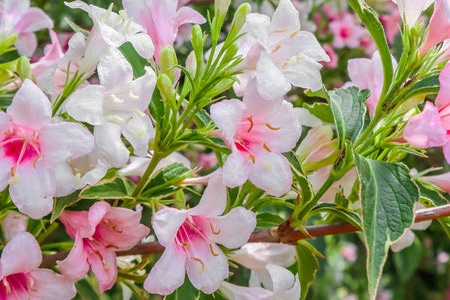
Weigelas don’t need much water to bloom and thrive. You can usually get away with watering them once a week. If you live in a region that experiences regular rainfall throughout the summer, you might not have to water them much at all.
The plants will thrive and bloom as long as the soil is moist. Avoid overwatering these bushes. Weigelas are notorious for developing root rot that spoils the plant, and it won’t flower.
Flowering
All weigela varieties have unique blooms in color and shape. They’re a pretty plant to look at when they’re in full bloom, with most of them bursting into flower in May. The flowers last through the summer, and some varieties offer a second round of blooms in the late summer.
The fragrant blooms on most varieties last until September or even as late as October. Varieties planted in warmer climates tend to last longer and die off faster in cooler regions.
Pruning
You don’t have to worry about pruning the smaller dwarf weigela varieties. When pruning, stick to removing the branches that look dead or out of shape. Prune the larger varieties after they finish blooming at the end of the fall towards mid-winter.
Diseases
Weigelas are hardy shrubs, and most don’t have any diseases to worry about during the season. Root rot is the biggest concern with these plants, but the right soil conditions and watering schedule ensure this doesn’t become a problem for the shrub.
Types of Weigela for Every Afficionado
If you spend enough time with all of the options above and are still wanting more, then you are a true fan of this flower. There are more weigela varieties you can find, that will likely just be rare hybrids and cultivars. Learning about them is simple online, but getting your hands on them will be an adventure. Have fun!



